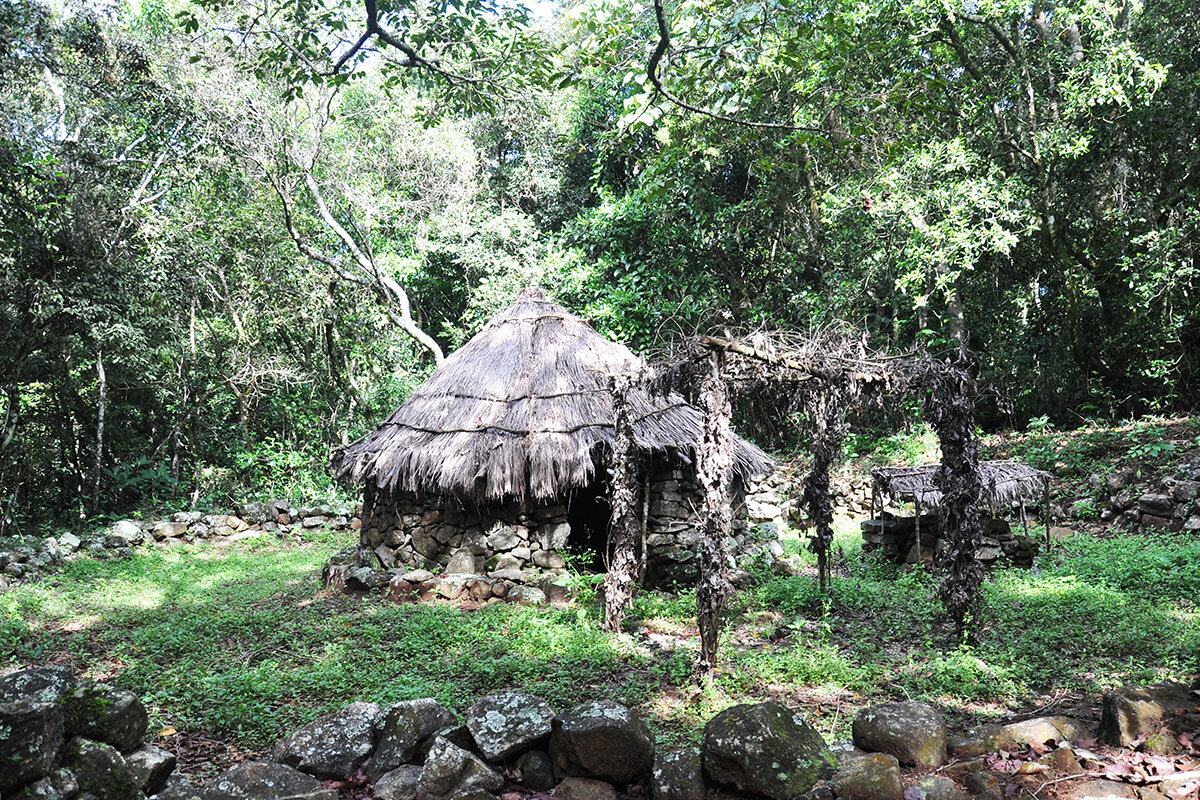Do not disturb: In India, traditions and science protect sacred forests
Loading...
| Shillong, India
The dense green expanse of Mawphlang Forest in northeast India is dotted with orchids, ferns, mushrooms, butterflies, and medicinal plants. Monoliths, a human intervention, represent the spirits of the ancestors of the local Khasi people. Donkit Lyngdoh is a guide to this sacred grove and has been familiar with the forest since he was a child. “I played here with my brothers and sisters, and we were always told to tread carefully, not picking up as much as a twig, so as not to disturb the forest deity. The deity never fails to protect the forest,” says Mr. Lyngdoh.
These sacred groves are present in almost every village in the state of Meghalaya. Experts say there are 100,000 or more of these biodiverse habitats across India, though their numbers and size have been shrinking. But a combination of tradition of care for these spaces and new efforts to emphasize their value, in both a cultural and environmental sense, are giving hope that they can be preserved.
“Sacred groves are useful in innumerable ways – from soil and water conservation to being reservoirs of important, rare, and endangered species,” says Delhi-based ecologist Pia Sethi, senior fellow at the Centre for Ecology Development and Research (CEDAR). “They are critical wildlife corridors and refuges in a fragmented landscape.”
Yogesh Gokhale, a senior fellow at The Energy and Resources Institute in New Delhi, says “sacred groves have existed in cultures and communities across the world, in the pre-Christian era, related to animist beliefs. The advent of monotheism led to a loss of nature-based systems, that used worship to protect nature. But in India the existence of multiple gods and deities have helped preserve these pockets of biodiversity.”
Treasured sites
With a thick canopy overhead and a carpet of leaves, twigs, and moss underfoot, Mawphlang feels untouched and primeval. Mr. Lyngdoh says that in the past, Khasi kings and leaders held important meetings and new chiefs of clans were anointed here.
India has a long history of a reverence for nature, from trees and rivers to animals and birds, dating back to the times of the Rig Veda, an ancient collection of sacred Sanskrit hymns. Trees have always been considered to be an abode of gods and ancestral spirits.
Sacred groves reflect an example of what’s known as social fencing, a collective action and sense of responsibility, that protects the forests. From the rain forest of the Western Ghats, to the scrub forests of the deserts of Rajasthan, sacred groves range from a few square meters to many hectares and can be associated with a caste, village, or larger geographical area.
Today, many people – mostly urban dwellers – view the practices of the Indigenous and tribal communities who guard the sacred groves as superstitious. But underlying them is a logic of ecological sustainability. “The local myths and legends, as well as folk tales associated with sacred groves, go a long way in preserving the forests from destruction,” says Dr. Sethi.
Fostering these traditions is also an example of the growing recognition around the world that Indigenous peoples are often the best protectors of natural resources. India’s Forest Rights Act of 2006 was intended to help guard against the displacement of Indigenous peoples, but it doesn’t directly address sacred groves.
Annual rituals, folk dances, and ceremonies to appease the presiding folk deities or tree spirits are common in sacred groves, says the Keystone Foundation’s Anita Varghese. Lamps are lit to ward off evil spirits. Some sacred groves host altars to deities. In the Nilgiri Biosphere Reserve in southern India, Dr. Varghese works with Indigenous people on community-based conservation programs to sustain traditional practices. “In this area the tribal communities like Todas, Irulas, and Kurumbas have forest gods and deities that guard over their sacred groves, with memory stones for ancestors and life-giving streams and springs,” says Dr. Varghese.
Sacred groves are protected by certain unwritten, orally transmitted taboos and rules. Felling of trees, harming animals, and plucking leaves or flowers are usually forbidden. If anyone offends the grove, it is believed that the deities will punish him or her by illness, retribution, or crop failure. Minimal foraging and resource use like collection of firewood, fodder, drinking water, and medicinal plants by local people is usually allowed.
What’s it worth
The pressures of development – by agriculture or industry – mean that degradation threatens these areas that often contain virgin forest and are repositories of rare, endemic, or threatened species that have disappeared outside the grove. But tradition itself is also vulnerable. “With cultural and religious beliefs weakening, we have to bring in science to motivate people to protect the sacred groves,” says K.C. Malhotra, an anthropologist and human ecologist.
In 2012, the Ministry of Environment, Forest, and Climate Change began a project with more than a dozen universities and research institutes “to evaluate all the ecosystem services provided by sacred groves, from fresh water to carbon sequestration,” says Dr. Malhotra.
In the Western Ghats mountain range, the nonprofit Maharashtra Vriksha Samvardhini is working to identify devrais, as the sacred groves are known here, using drones and satellite imagery. Gurudas Nulkar of the Ecological Society in Pune says that his organization arranges devrai visits for school students. The society is trying to replicate species found in these sacred pockets by collecting seeds and replanting a different area to mimic a sacred grove.
“Economic aspirations have eroded sacred groves in many areas, but cultural traditions and strong community leadership are still helping preserve many of them,” says Dr. Gokhale.






